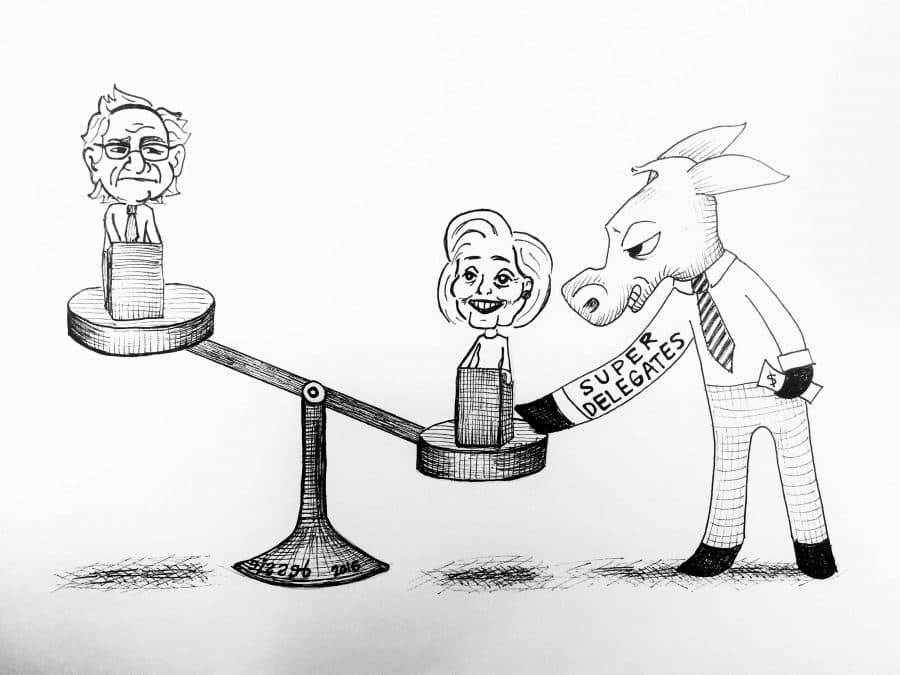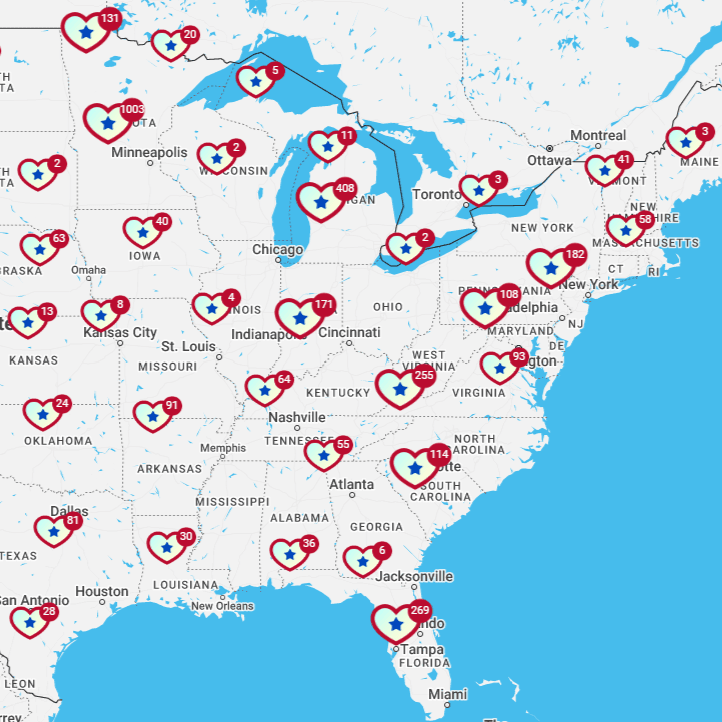
Superdelegates Are Super Anti-Democratic: How Political Parties Try To Rig Their Primary Elections
If you’ve followed politics at all, you’ve probably seen the words “delegate” and “superdelegate” thrown around when it’s time for a primary election. And if you’re like most of us, you don’t actually know what a delegate even is, let alone a “superdelegate” (is it a delegate that can shoot lasers out of their eyes?).
Like most aspects of American democracy, when you dig into the superdelegate system and how it actually works, you’ll probably be left with one overriding impression: …boy, this sucks.
So what is a delegate? What’s a superdelegate? What do they mean, what do they do, why do we have them, and why do they suck?
Welcome to one of the most under-discussed aspects of the two-party political system that shuts out any hope of independent challengers. Prepare to get angry.
A Brief On Political Primaries
As we’re probably all familiar at this point, the general election that’s held to actually determine the next office holder isn’t the only election in a given cycle – it’s simply the final one, the one that declares who will win office.
Primary elections are used by political parties to elect their nominee, who will represent the party in the general election. This is probably not breaking news to anyone. President Biden had to first win the 2020 Democratic primary election in order to advance to the general election as the Democratic nominee. Donald Trump had to do the same in 2016, as did Hillary Clinton, and so on.
Primary elections are waged between party members; Republicans run against Republicans, Democrats against Democrats, etc. Some of the more established third parties in America also hold their own primaries, like the Libertarian Party. They’re the funneling mechanism to get each political party more or less on the same page with throwing their unified support around one candidate for the general election with the idea being that if 3 Democrats ran against 4 Republicans, for example, it would be total chaos.
Two political parties, two candidates, the theory goes, makes it both easier for voters to assess their options, and easier for parties and candidates to effectively organize, fundraise, and rally support, knowing that they are no longer competing against ideologically-similar opponents.
However – like all aspects of American democracy, it seems – primaries are not decided by a simple tabulation of popular votes. No, that would make too much sense and be too reasonable!
Instead, political primaries in the USA operate with a delegate/convention system.
What Is A Delegate? Why Is There A Convention?
Delegates are essentially members of each political party who are assigned to vote for a given candidate in their party’s convention – a huge, in-person event for each political party to formally nominate the winner of the primary to advance to the election.
Each party uses a formula that factors in the popular vote share from that party over the past few elections, the state’s Electoral College votes, and the specific timing of each state primary to determine how many pledged delegates each state sends to the nominating convention.
If it sounds a bit confusing and convoluted, that’s because it is.
In the Democratic Party, for instance, a candidate needs to secure a majority of pledged delegates – 1,886 out of 3,770. Once that threshold is crossed, they have officially secured the amount of delegates needed to win the nomination at the party convention.
Some primaries work with a winner-take-all system, in which the top vote-getter acquires all of that state’s delegates to take to the convention. Some work with a proportional system, in which, if you win 36% of the state’s primary vote, you acquire 36% of the state’s total pledged delegates.
Essentially, delegates are real human beings, chosen by the party, to represent the outcome of each individual state primary at the convention. If you’ve ever seen a picture from a party convention, where a ton of people are standing around holding signs that all say “New Hampshire,” for instance – those are the physical delegates that represent the outcome of that state’s primary. At the convention, when ballots are being counted, these delegates are bound by the results of the primary to vote for whoever won their state.

So… Superdelegates?
Here’s where the already-convoluted system starts to get outright anti-democratic.
This is more prevalent in the current Democratic Party primary system, but has been used by both parties throughout history: in addition to the pledged delegates that candidates earn by competing in elections, individual members of the DNC and other party officials can be chosen as superdelegates, and their vote at the party convention counts the same as a delegate that was won via a primary election.
In 2020, the Democratic Party had about 775 superdelegates whose votes counted towards the eventual party nominee. These are 775 party officials not bound to the results of any one election, but rather their personal feelings or relationships with a candidate. Essentially, superdelegates act as the “establishment wing” of any given presidential primary, and they can help run up the delegate score for the candidates with the closest ties to the existing party establishment.
Great… 775 completely unaccountable delegates who are free to sway the primary election in any way they’d like, in a way that doesn’t reflect or represent any sort of voter pool.
In 2016, the controversies surrounding superdelegates in the Democratic Party hit an all-time high when, before a single primary or caucus vote was cast in the primary between Hillary Clinton and Bernie Sanders, Clinton claimed a monstrous superdelegate lead of 571 to 45, a margin that was near-impossible to make up with popular vote pledged delegates.
To highlight the extreme disparity in the delegates selected by voters vs. superdelegates, the 2016 Democratic Primary in Illinois offers an illuminating example: Hillary Clinton won the popular vote over Bernie Sanders by a very close margin of 50.6% to 48.6%, which – in the proportional system Illinois used – netted Clinton 79 pledged delegates and Sanders 77 pledged delegates. But because Clinton easily claimed 25 of the state’s 26 superdelegates, she headed to the convention with 103 total delegates from Illinois vs. 78 for Sanders.
With the superdelegate system, Clinton’s 50.6% popular vote victory translated into carrying 57% of the state’s total delegates. In other words – the party put its thumb on the scale to boost Clinton by an extra seven percent out of thin air.
Though the Democratic Party has since worked to reduce the influence of superdelegates on primary outcomes, it still integrates them into their party structure and hasn’t gotten rid of them whatsoever.
It’s encouraging to see superdelegates slowly having their influence wane, but let’s be in honest – in a democratic society, there shouldn’t have been any superdelegate influence to begin with. Allowing party loyalists to intervene in primary elections to sway the outcome to their preferred candidate is quite literally the opposite of popular democracy, and frankly, it’s a bit mind-blowing that they’ve been a part of the primary infrastructure in America for so long.
Party interventions like this are why GoodParty.org advocates for far more independent representation at all levels of government, because not only are they not beholden to big party interests, but the more independents that win office in America, the more obsolete these political machine operations become. We think it’s beyond time to put systems of elite party influence behind us.
